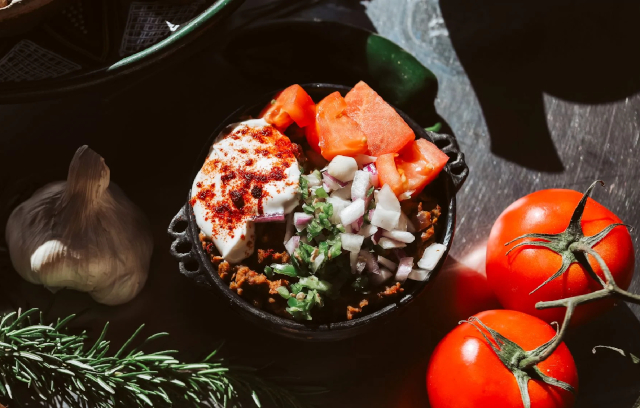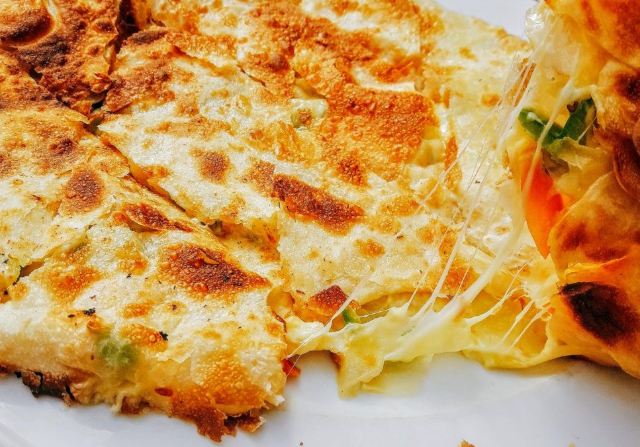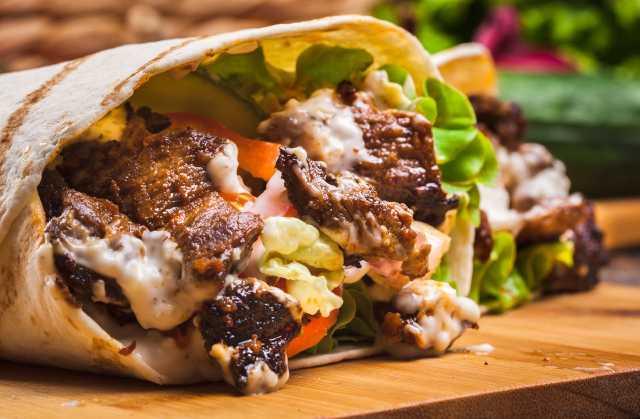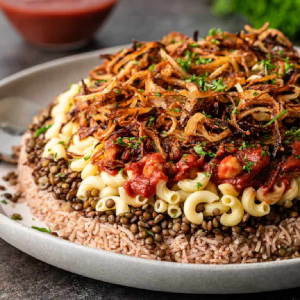The major Egyptian cities offer white-tablecloth dining experiences to challenge or exceed those of Italy, France and other mainstream European foodie meccas. But this ancient and mysterious land is also home to a street food culture that is representative of the whole Middle East yet unique…
 Fuul: The national street food of Egypt.
Fuul: The national street food of Egypt.
Ah, Egypt! Land of the Pharaohs, the pyramids at Giza, the Valley of the Kings, the sands of the Sahara… And one of the oldest and most classic street food scenes to be found around the rim of the Mediterranean.
At first glance, it seems impossible that a country whose geography is so utterly dominated by desert could have evolved a culinary tradition that embraces so many different foods and prep traditions. But take closer look at the Nile Valley. The river supports a sliver of rich soil that has fed the whole country for millennia. And consider where Egypt is located – the most highly-populated and exotic parts, anyway: on the coast of the Med, and built on the rich delta of the second longest river in the world.
Egypt owes much of its diversity and its exotic patina to the fact that it’s been a travel and trade crossroads for thousands of years. Everyone who came left a little of themselves behind.
On our menu today
Fuul: The national street food dish of Egypt. It’s everywhere in the marketplaces, everywhere in the country, as well as other African nations. It’s basically a Fava Bean stew – very thick – and is often served with a fried or boiled egg on top. Can also be stuffed into sandwiches.
Taameya: Often sold alongside Fuul, this is basically a Fava Bean Falafel. Their distinctive aroma permeates the Egyptian street food markets. Comes plated or in a sandwich (as pictured below).

Like Fuul, it’s a highly nutritious dish and is often eaten in the morning, to set you up for the rest of a busy day.
Koshary: This is a combo platter, of sorts, using pasta, rice, lentils and spicy chickpeas, covered with a boldly seasoned tomato sauce (see photo, top of page). Koshary used to be called ‘poor folks’ food’ because it’s so inexpensive. But it’s rich in essential nutriens and, especially, protein. The rice and pasta together with the chick peas and lentils provide a complete dietary protein.
Kofta: Lamb or goat meatballs. They’re ubiquitous across the eastern end of the Med. In Egypt, they also roll the meatball mixture of ground meat onions and spices on a wooden skewer to make a Kofta Kebab. The latter, with its own ‘handle’, is particular with the grab-and-go crowd.
Fiteer: A thin, crispy, flaky pancake/pastry made from multi-p0le sheets of Phyllo pastry. Sweet Fiteer are usually stuffed with icing sugar or other sweets.

Savoury ones are often stuffed with crumbled Kofta or Tammeya, onions and other veggies – not unlike an Italian Calzone.
Hawawshi: This is a classic Egyptian sandwich consisting of cooked, minced meat, chilies and onions stuffed between two layers of Egyptian Pia bread, called Aish Baladi. It’s the same as Pita found all across the Middle East, but is traditionally made with whole wheat flour. The sandwich is then roasted in an oven. Another classic hand food.
Shawarma: This one most us are familiar with, to some degree or another. If you’ve never stood in awe in front of the magical vertical rotisserie on which Shawarma meat is roasted, you’re missing a real treat.

This is a savoury wrap of chicken, lamb or goat marinated in classic flavours including coriander, cumin, cardamon, garlic, cayenne and smoked paprika. In Egypt, they serve the dish either plated or stuffed into an Aish Baladi, topped with sliced tomatoes and a zingy yogurt sauce.
And those are just the obvious choices…
Most of the Egyptian street foods mentioned above actually come in myriad versions depending on where in the country you are dining. One very good thing about this ancient street food tradition is that it employs simple ingredients you can get almost anywhere you might live. So there’s no reason not to experiment with Egyptian hand foods in your own kitchen!
~ Maggie J.

